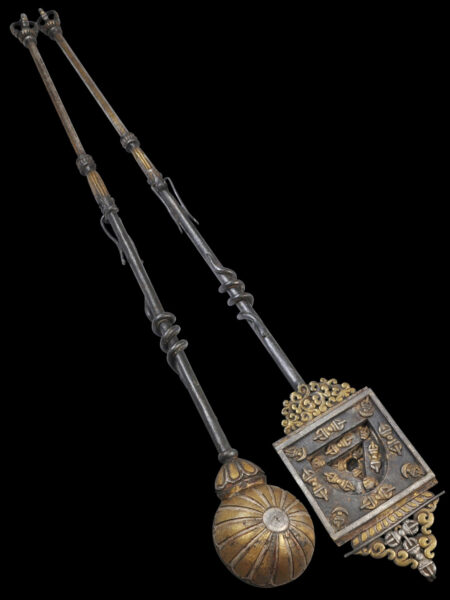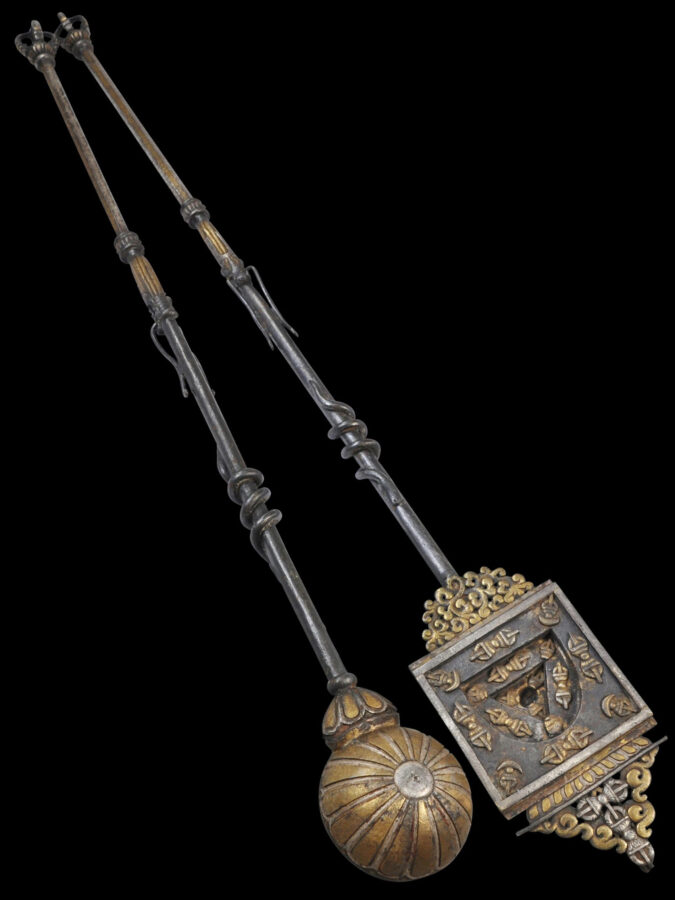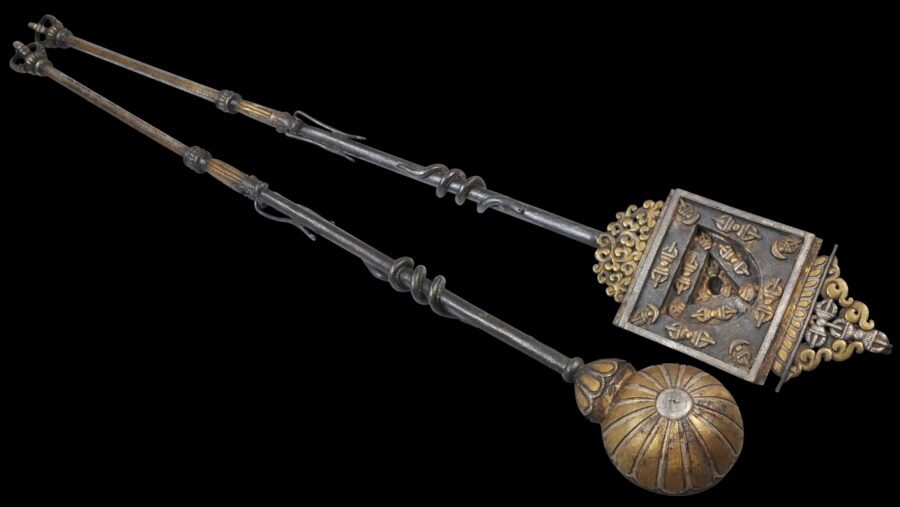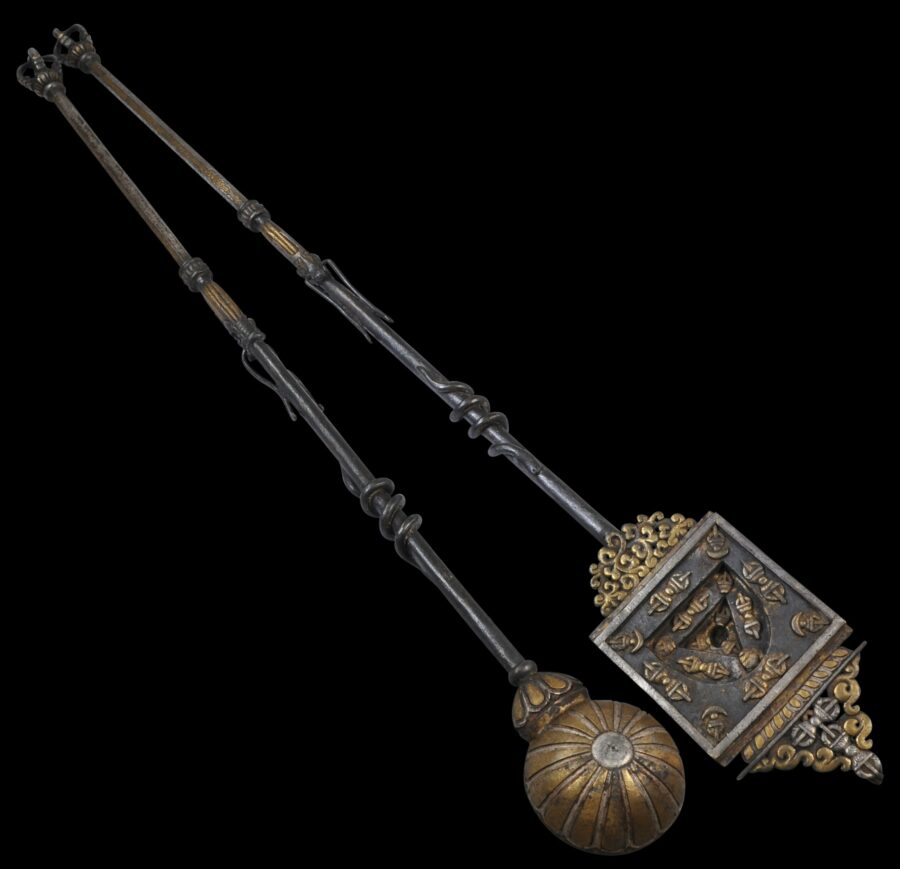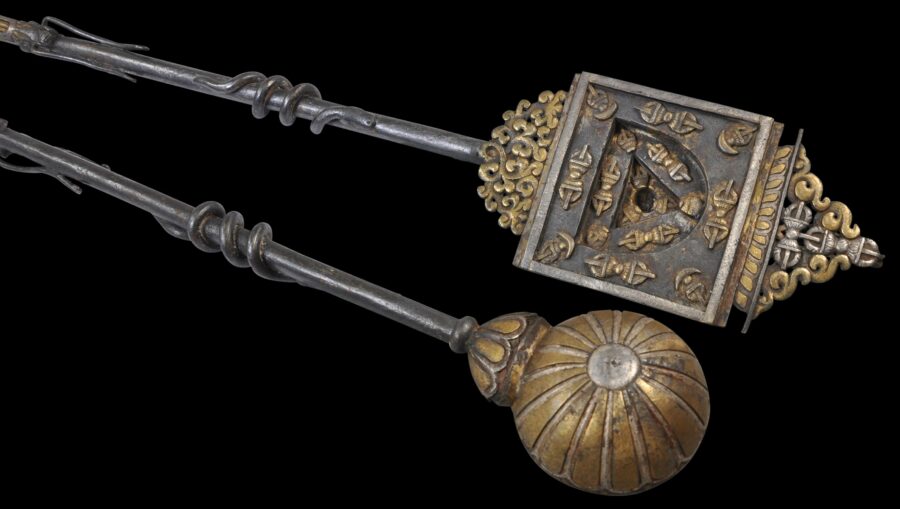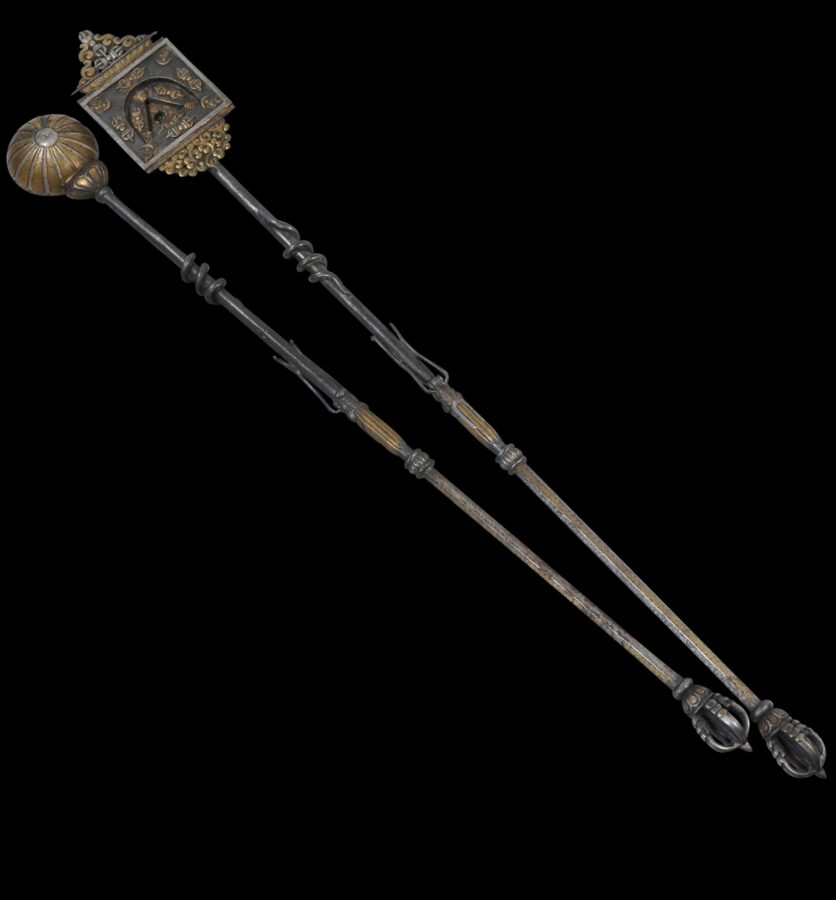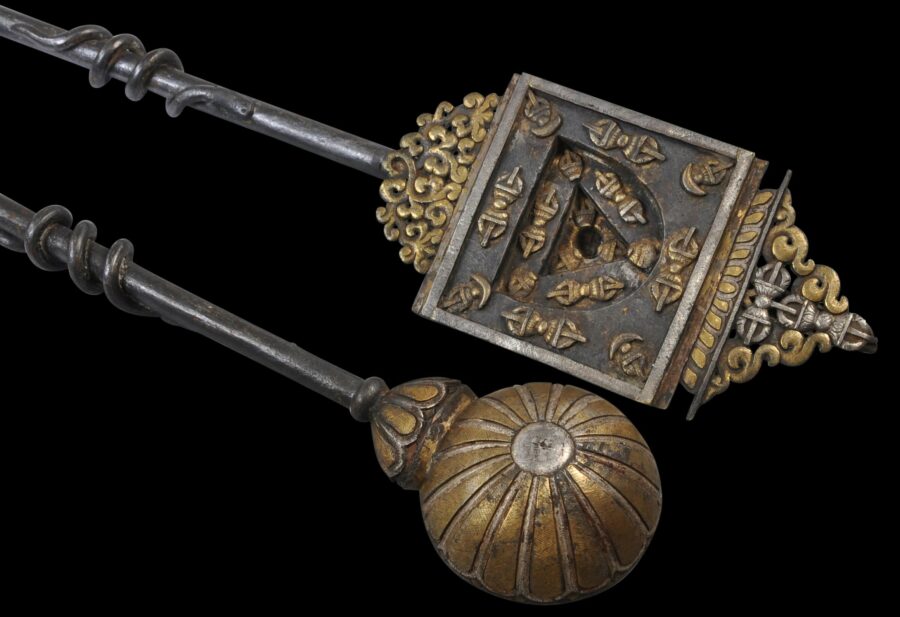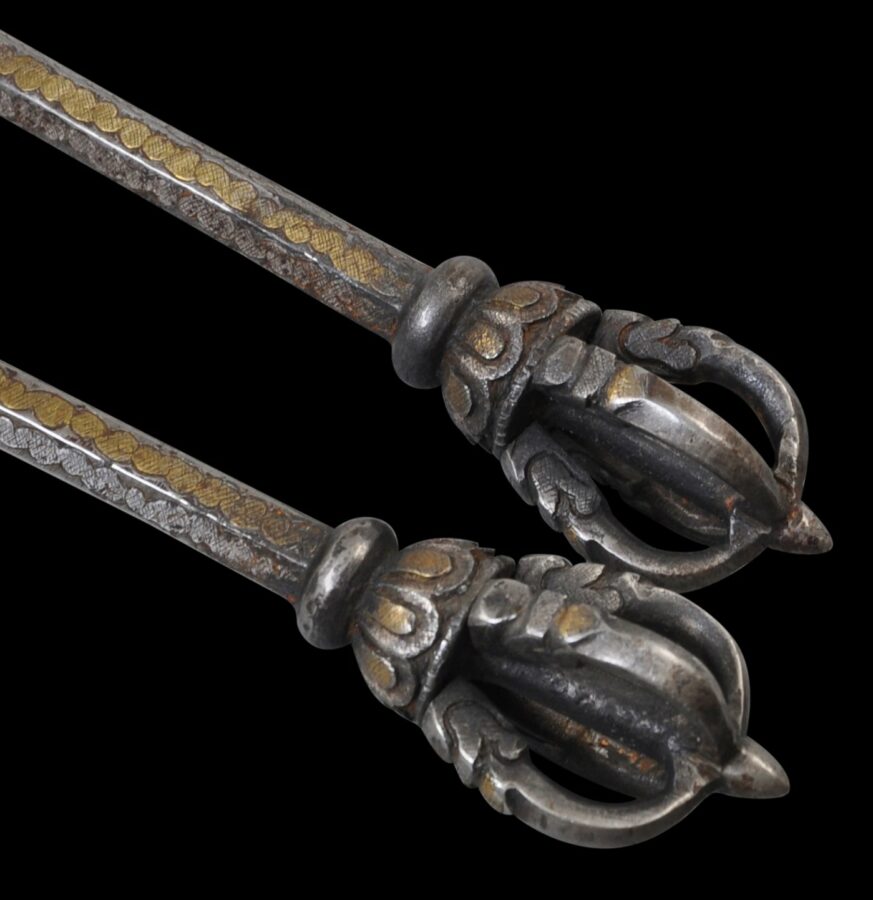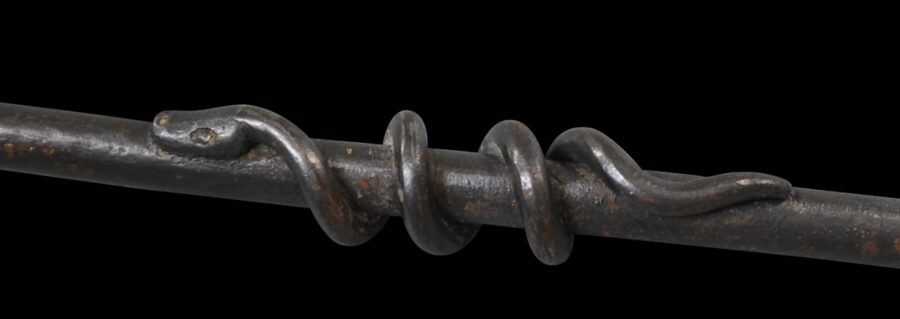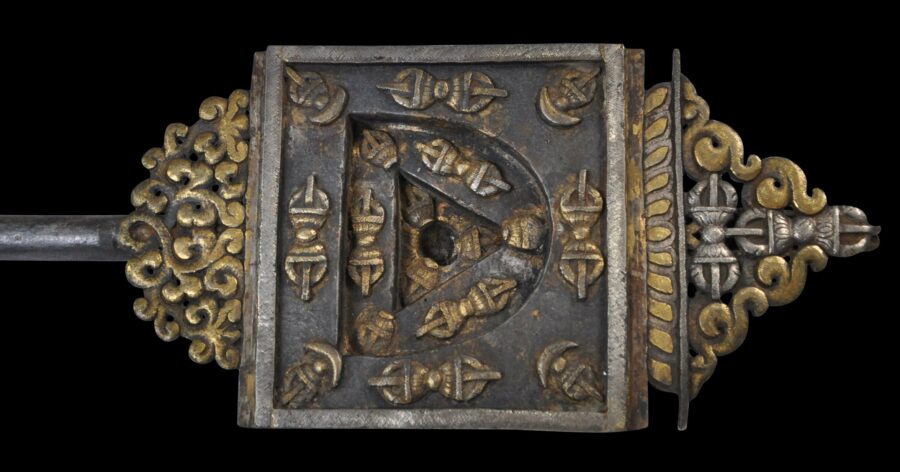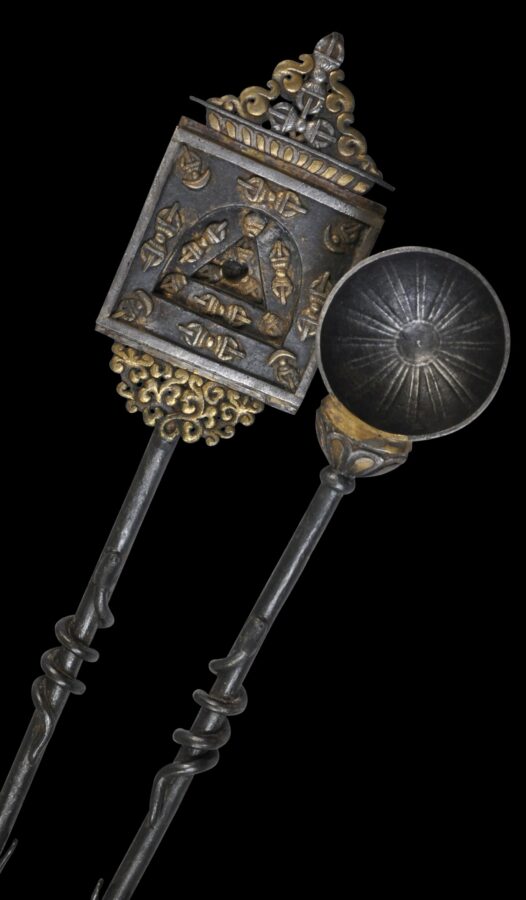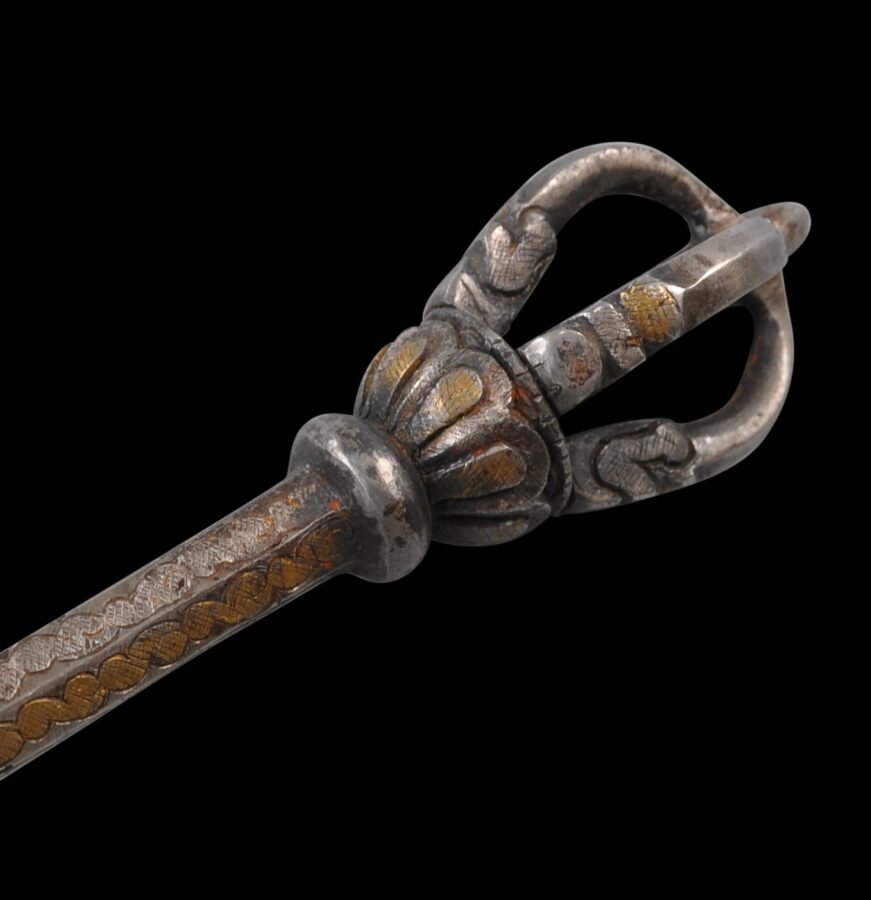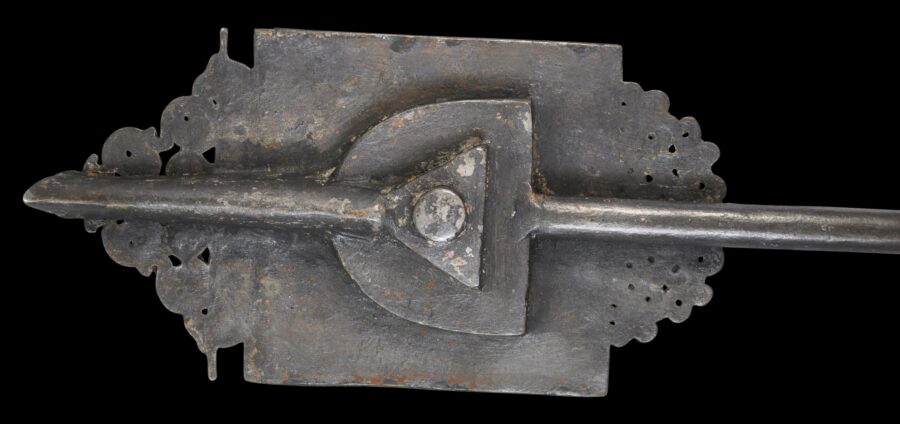This rare and fine pair of ladles was used in the Tibetan tantric fire offering ceremony (homa). Each is made of cast and chiselled iron that has been overlaid or damascened with thin coverings of gold and silver.
Each ladle is of slender form. One terminates with a half spherical spoon, and the other with a recessed triangular well within a square tray. The square ladle has a small drain at the top of the recessed triangle which leads to a spout on the underside and which has its opening at the end of the vajra motif at the tip of the implement. (Ladles with triangular recesses were intended for rites associated with wrathful deities.)
The underside of the round pan is decorated with gold damascened petal motifs bordered by silver damascened frames.
The square pan is decorated at the top with a pair of silvered vajras bordered by gilded cloud motifs over a gilded petal base. The lower part has gilded, pierced scrolling. The interior of the pan is decorated with gold damascened vajras and ritual flaying knives (kartikas), all in relief.
The handles are six sided and are alternately decorated with gold and silver damascened scrolling. Each terminates with a five-pronged vajra terminal.
Both pans of the ritual spoon and tray issue from the mouths of dragons with long horns and damascened gold highlights. Closer to each pan is a coiled snake.
The ladle with the triangular well was held by the practitioner in the left hand, over a blazing fire. The other was held in the right hand. Melted butter was then scooped up with the round ladle, and offered by being poured into the square ladle from where it would flow through the ladle’s spout, beyond the vajra at the tip of the ladle, and into the flames. The fire god Agni was seen as analogous to the flames, and in his heart is the mandala of whichever Tantric deity was being honoured with the ceremony. The pouring of the melted butter from one ladle to the other, and then out from the second ladle, was seen as symbolising the pouring of the butter through the mouth and heart of Agni himself.
The gold and silver decoration over the iron was achieved by lightly scoring the iron surface and then hammering on very thin layers of gold and silver, which are softer metals, onto the surface. (The process is known today as damascening, after the city of Damascus, which was once renowned for this technique.)
The ladles always were used in pairs though often they have become separated from one another.
A related though less elaborate set was offered as lot 3 in Sotheby’s New York ‘Indian, Himalayan, South-East Asian and Indian Miniatures,’ 20-21 September 1985. Another set was offered at Sotheby’s London, December 7, 1971, lot 25. A related pan implement comprised part of lot 161, Christie’s New York, ‘Indian and Southeast Asian Art’, March 30, 2006. Another single example comprised lot 102, Christie’s New York, ‘Images of Transcendence: Indian and Southeast Asian Art’, March 23, 1999.
A related pair is in the Musee National des Arts Asiatiques Guimet (Paris) and illustrated in Beguin (1990, p. 162). Also see a related homa ladle in the Metropolitan Museum of Art.
Almost all known examples are attributed to the 15th-16th century metalsmiths of Derge.
The pair here is in excellent condition.
References
Beguin, G., Art Esoterique de l’Himalaya: La Donation Lionel Fournier, Musee National des Arts Asiatiques Guimet/Reunion des Musees Nationaux, 1990.
Henss, M., Buddhist Ritual Art of Tibet: A Handbook on Ceremonial Objects and Ritual Furnishings in the Tibetan Temple, Arnoldsche, 2020.
Thurman, R., & D. Weldon, Sacred Symbols: The Ritual Art of Tibet, Sotheby’s/Rossi & Rossi, 1999.
Tsultem, N., Mongolian Arts and Crafts, State Publishing House, Ulan-Bator, 1987.


